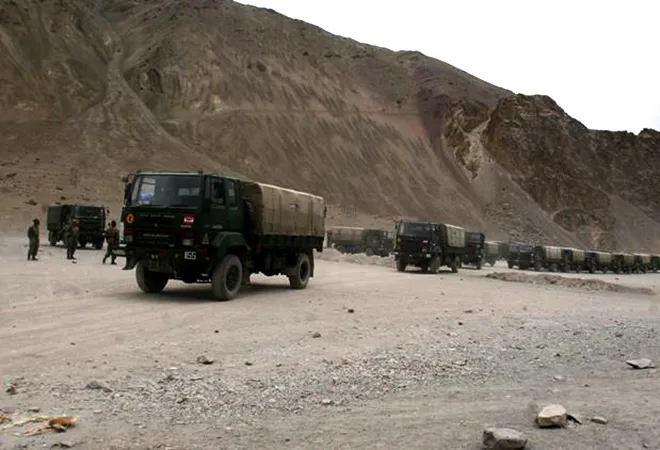The killing of 20 Indian army men at the Galwan river confrontation on June 16 is a gamechanger in India’s national security and foreign policy strategy. For more than a month now, Indian and Chinese military forces have been engaged in a border stand-off in Ladakh on the western sector of the Sino-Indian border. For 45 years, India and China took pride in the fact that there had been no fatalities on the Line of Actual Control (LAC), and that there had been peace and tranquility to a reasonable extent, despite occasional flare ups. That changed with this violent clash in which the dead included the commanding officer of the battalion. This changes the dynamics in India-China relations for the worse. As Ashley Tellis commented perceptively: “Sino-Indian relations can never go back to the old normal. They will reset with greater competitiveness and in ways that neither country had actually intended at the beginning of this crisis.”
There will be pressure on the Indian government to not go back to business as usual after this. New Delhi may also not be able to afford to continue its ambivalent and uncommitted foreign policy approach, generally characterized as “hedging.” India’s attempts at straddling multiple camps is likely to come under pressure. India has shown growing commitment to groupings such as the Quad, which has now been upgraded to ministerial level engagements. At the same time though, Prime Minister Narendra Modi has also made efforts to engage again with the Non-Alignment Movement (NAM), attending a virtual summit in early May. This was the first time he attended a NAM summit, a group he has largely ignored for years. Although India has emphasized its role in the Russia-India-China (RIC) and the Brazil-Russia-India-China-South Africa (BRICS) groupings, there are likely to be questions raised about the utility of groups that are largely run according to Beijing’s wishes and which are unlikely to contribute much value to New Delhi.
On the clashes itself, there is still confusion about what happened over the last couple of days, except about the fatalities on the Indian side. There is an even a bigger question about the rationale behind China’s provocative actions. Both the Indian Army and the Ministry of External Affairs (MEA) have issued statements. The MEA stated that subsequent to “a productive meeting on 6th June 2020” wherein a process for de-escalation was agreed upon by the two sides, there were additional meetings of ground commanders “to implement consensus to respect the Line of Actual Control in the Galwan Valley.” The MEA spokesperson also added that “our expectation that this would unfold smoothly, the Chinese side departed from the consensus to respect the Line of Actual Control (LAC) in the Galwan Valley.” On a phone call with the Chinese foreign minister Wang Yi this afternoon, India’s External Affairs Minister Dr. S Jaishankar claimed to have categorically stated that “this unprecedented development will have a serious impact on the bilateral relationship.” He further called on China “to reassess its actions and take corrective steps.”
The Chinese readout was very different, with Wang reportedly telling Jaishankar that India must investigate and “severely” punish those responsible and ensure that such incidents do not happen again. “The Indian side must not misjudge the current situation and must not underestimate China’s firm will to safeguard territorial sovereignty.”
India-China flare ups have seen an uptick since Xi Jinping came into office in 2012. Repeated border incidents – Depsang (2013), Chumar (2014), and Doklam (2017) – had already strained the relationship, but they pale in comparison to the current border crisis. Following the downturn after the Doklam, the two sides attempted to build greater confidence in each other and build a certain amount of predictability in order to manage crises through informal summits like the ones in Wuhan and Mamallapuram. This time around, it is probably fair to say that no “Wuhan spirit” can salvage bilateral relations.
There has not been much cooperation in bilateral security relations to start with (except for some limited-scale military-to-military exercises) but economic relations between India and China are deep. Driven by market factors, China had made some gains in the power, infrastructure and telecom sector but that could come to a grinding halt. However, the biggest loser is possibly China’s Huawei in its efforts to enter the Indian 5G market. Even as there was skepticism about the company and its links to Chinese intelligence, there was a chance that China would be given a fair opportunity in the Indian 5G market, but Beijing has most likely dashed that hope. India could also impose additional economic costs that will further limit China’s entry into the Indian market, though this will hurt both sides.
There will be pressure on India to recalibrate its strategic engagements. If China thought that putting pressure on India for building closer ties with the United States, Australia and Japan was going to work, it has rebounded badly. The Galwan crisis will likely push India to build much closer strategic ties with the Quad and the Quad Plus and with the US and its allies in the Indo-Pacific.
This commentary originally appeared in The Diplomat.
The views expressed above belong to the author(s). ORF research and analyses now available on Telegram! Click here to access our curated content — blogs, longforms and interviews.




 PREV
PREV


